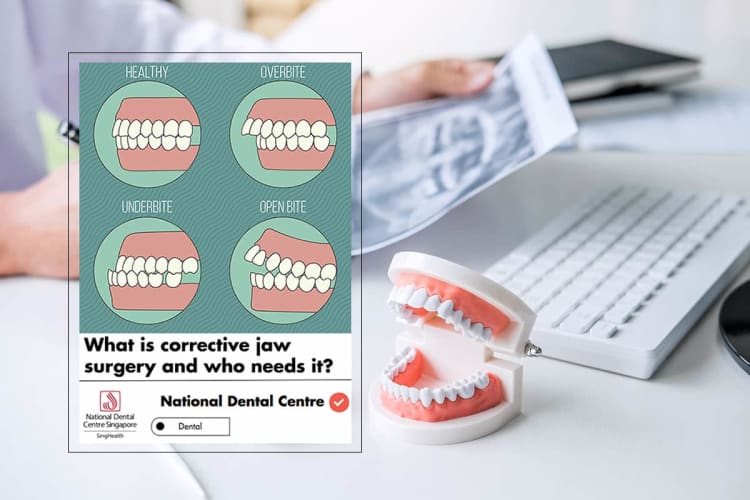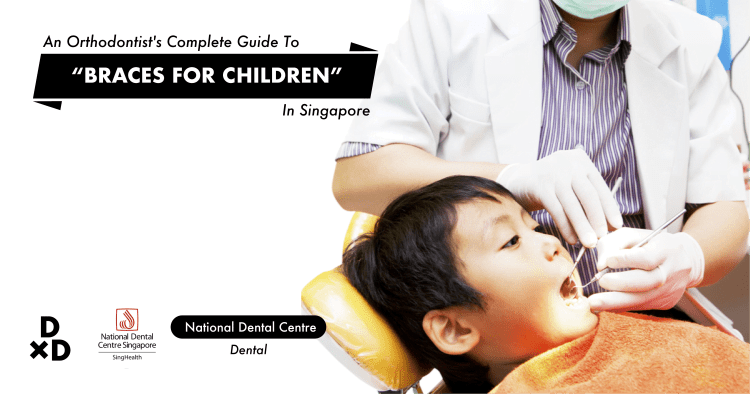One of the main reasons people seek orthodontic or braces treatment is to improve their bite. For some, the cause of their bite problems lies beneath their teeth, in the jaw bones.
The word “orthognathic” means “pertaining to the normal relationship of the jaws”.
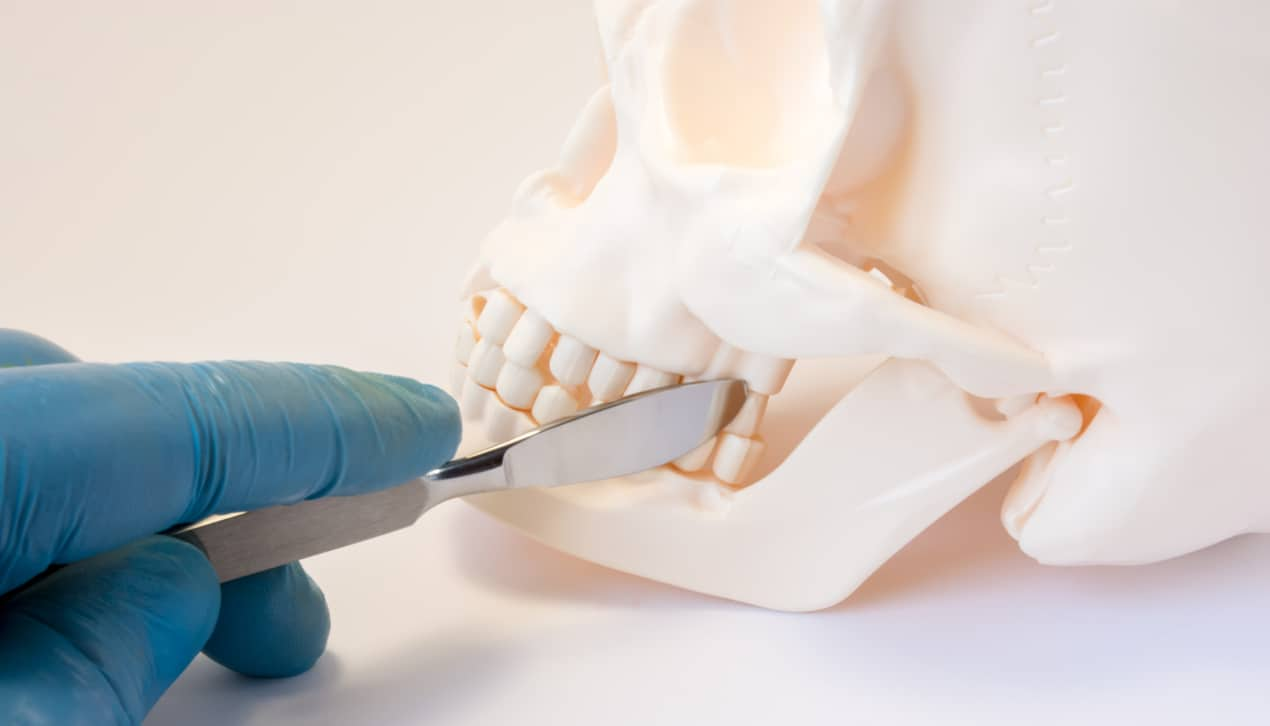
The upper jaw bone lies under the nasal bones while the lower jaw hinges near the bones around the ear.
When there is disharmony in the way the jaws sit with respect to each other, orthognathic surgery is advised to achieve normal alignment of the jaws.
Dr Priscilla Lu, an Associate Consultant Orthodontist, from National Dental Centre Singapore explains.
How do you know if your jaws are misaligned?
The disharmony between the jaws may present in several ways. Common presentations include:
- A long lower jaw
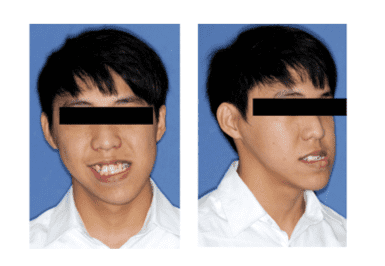
An example of a patient with a long and asymmetric lower jaw requiring orthognathic surgery
If you have a long lower jaw, you might find it difficult to chew with your front teeth effectively as your lower teeth and the upper teeth do not come into contact with each other.
You may complain of impaired speech where words, typically those with ‘s’, ‘f’, and ‘v’ letters, may not be clearly enunciated.
Also, with a long lower jaw, you may also find that your chin is more pronounced and your lower lip is thicker and more protruding, compared to your upper lip.
- An asymmetric jaw
An asymmetric jaw is one where the lower jaw is slanted too much to one side that there is an imbalance in the bite.
This is called a crossbite. A slanted jaw can be mild to severe. It can usually be detected through visual inspection alone.
When looking at a person with a crossbite from the front, you will notice that the position of the chin is not in line with the nose. Sometimes the lips may also appear slanted.
- A short lower jaw
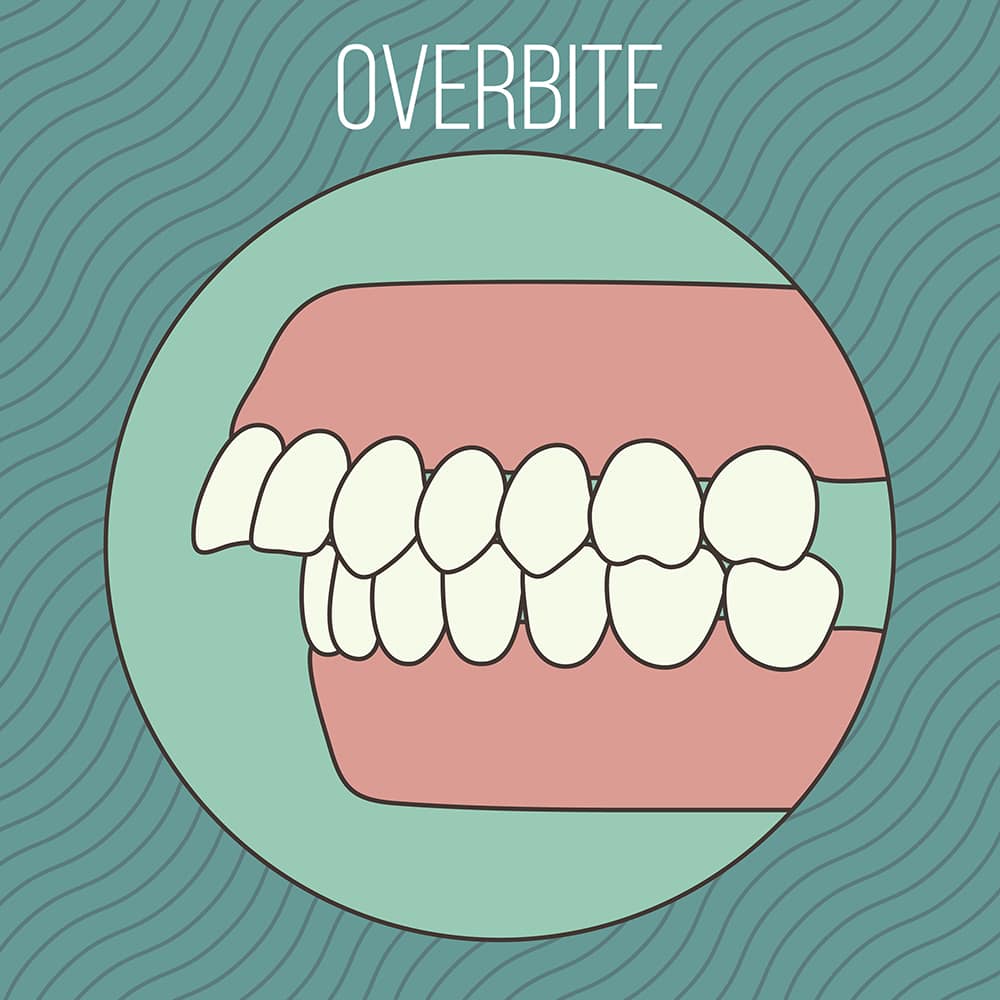
If you have a short lower jaw, you may complain of protruding upper front teeth. Reason being, the distance between the upper teeth and lower teeth are usually increased.
From the side view, your chin is small. You may also appear to have a double chin even though you are in a healthy weight range.
This is because when your lower jaw is short, there isn't enough length for your muscles and tissues to spread out evenly.
With a short lower jaw, you're at a greater risk of obstructive sleep apnoea as your airway is easily narrowed when the tongue falls back during sleep.
- A skeletal open bite
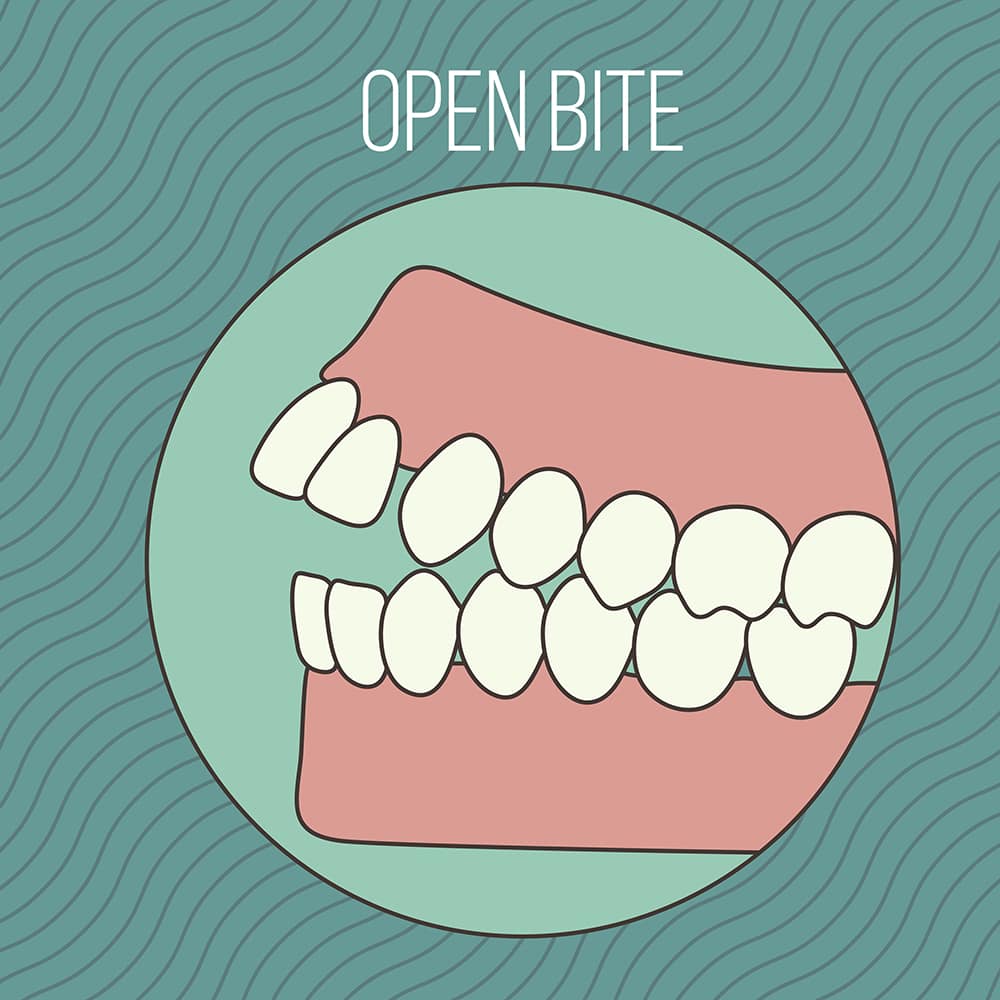
An open bite is one in which the front teeth do not contact each other. This means that chewing occurs only at the back teeth region and the front teeth do not contribute to chewing.
A skeletal open bite happens when the upper and lower jaws diverge from each other. Often this gives you a longer face appearance.
- A gummy smile
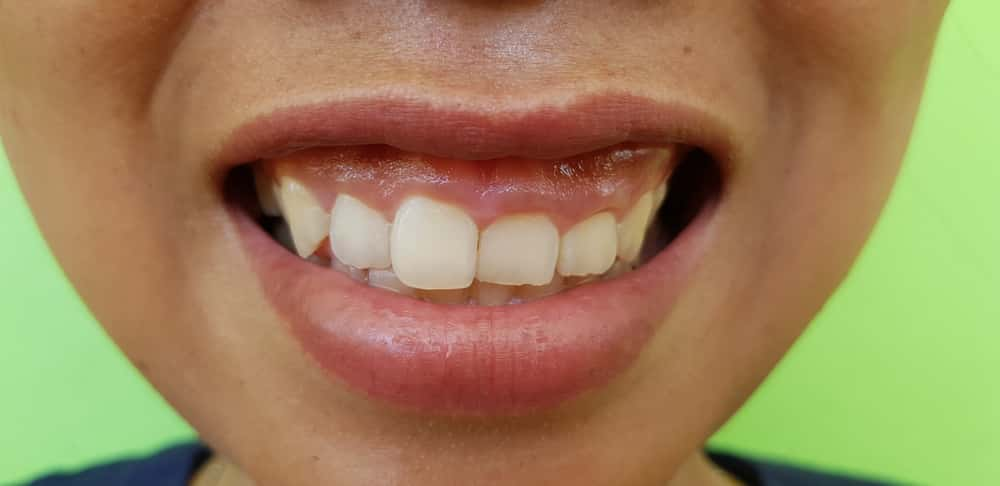
Everyone is beautiful when they smile. While it is normal and desirable to show some gums when you smile, some people tend to show way more than they would like to.
This condition is termed “vertical maxillary excess”, meaning that the upper jaw is longer and lower than usual.
If you have a vertical maxillary excess, you tend to show a lot more gums when you smile. As the upper jaw is longer and lower than usual, it is common for you to find it hard to close your lips comfortably.
How would you know if you need orthognathic surgery?
If you think you may have some of the conditions mentioned earlier, seek a consultation with an orthodontist (a dentist who specialises in correcting the positions of teeth and jaws) who will work together with an oral and maxillofacial surgeon (or oral surgeon) to determine if orthognathic surgery is necessary or suitable for you.
Facial examination, dental impressions, x-rays of your jaws and photographs will be used to assess the degree of disharmony between the jaws.
What should you do if you want to correct your jaws?

There are two treatment sequences available in corrective jaw surgery:
Braces treatment first followed by jaw surgery
Jaw surgery first followed by braces treatment
Your orthodontist and your oral surgeon will jointly decide which treatment sequence is most suitable for you based on the positioning of your teeth and jaws.
An individualised treatment plan will be created and the risks of each procedure, as well as alternative options, will be explained to you.
Treatment will start only after you have considered your options and weighed the risks.
You might need to align your teeth with braces before jaw surgery
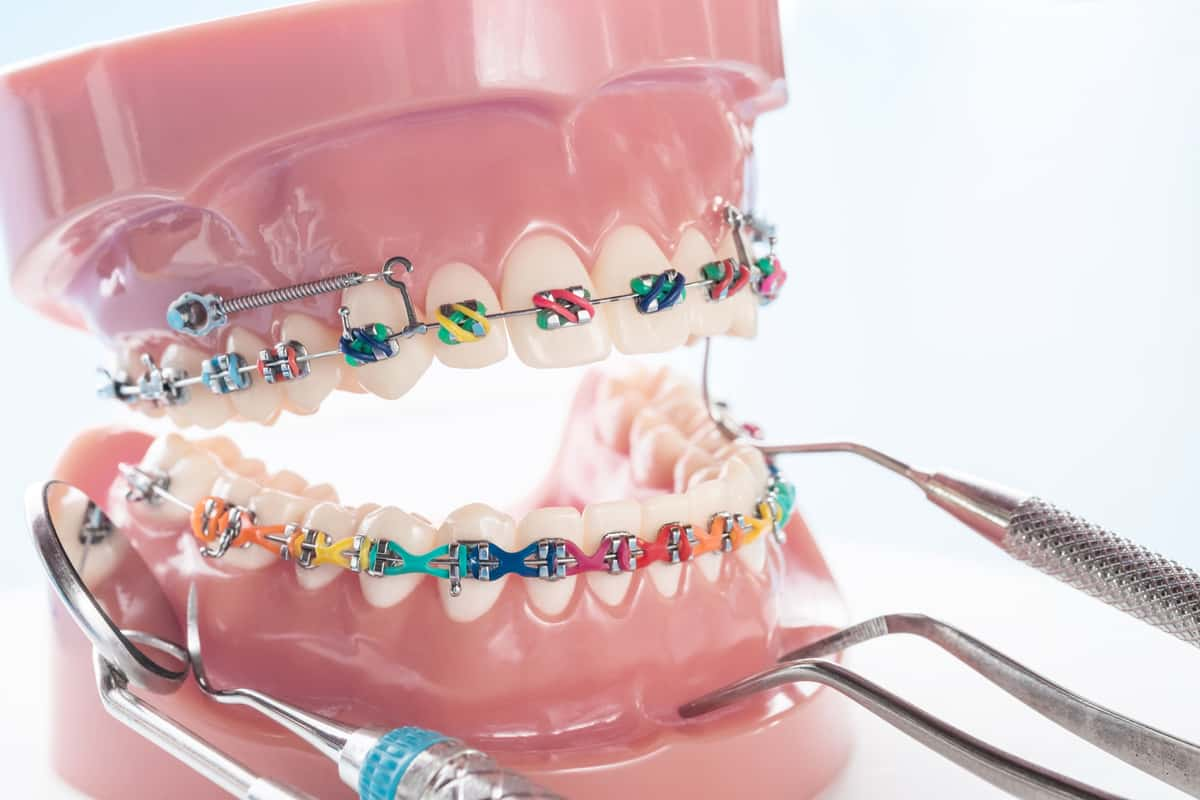
For those of you who will have braces treatment followed by jaw surgery, your teeth will first need to be aligned before your surgeon can position the jaws together.
This phase of braces treatment will typically require nine to 18 months.
As the oral surgeon will use the braces to stabilise the teeth and the jaws during surgery, the braces are kept on the teeth during surgery regardless of the chosen treatment sequence.
Jaw surgery requires hospitalisation
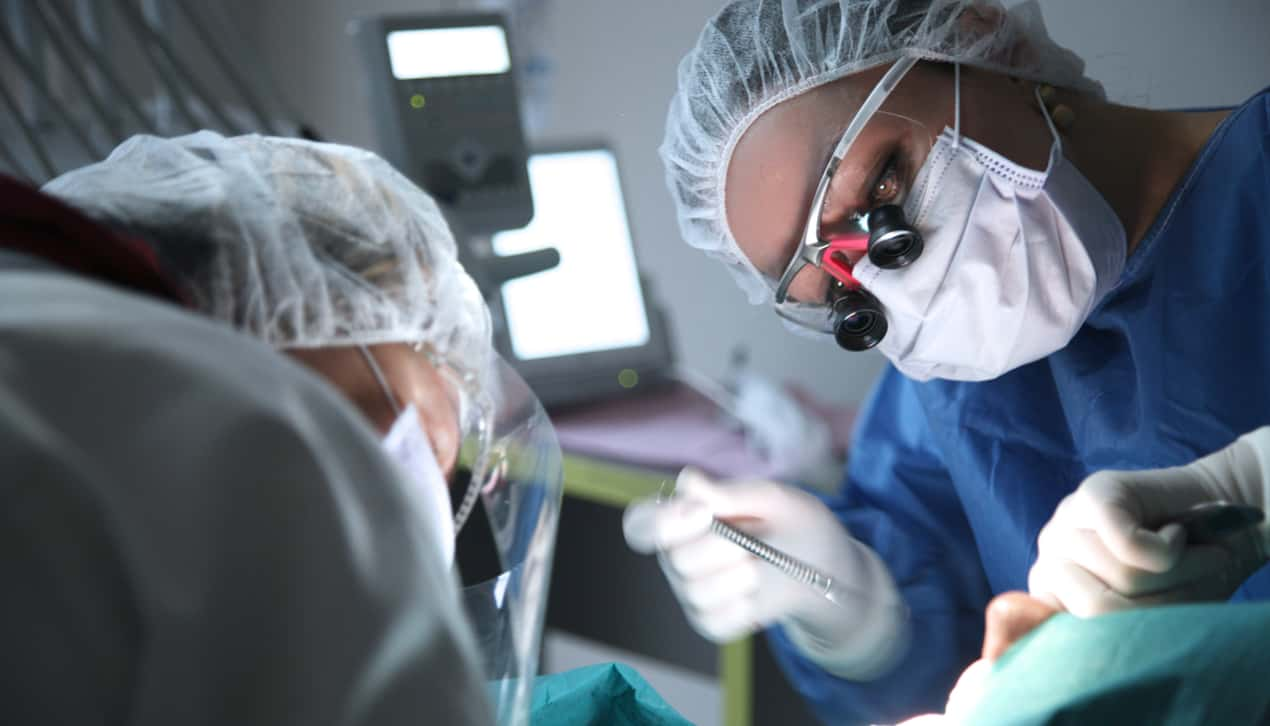
As the operation is performed as an inpatient procedure, you'd have to be admitted into the hospital.
You will be unable to eat normal foods immediately after surgery, but will slowly resume a normal diet about one month after surgery.
You will have to continue to wear braces for 6 to 9 months after surgery. After which, the treatment is considered complete.
Can I have other types of braces such as Invisalign if I require orthognathic surgery?

Braces are devices that are fitted onto teeth to enable teeth movement.
In recent times, other types of braces such as clear aligners have been introduced as an alternative to traditional metal braces. Invisalign is a brand of clear aligners.
One of the key considerations, if you are a suitable candidate for clear aligners, is the positioning of your teeth and the necessary teeth movement required to achieve your ideal bite.
Your orthodontist will be able to advise you on your suitability for clear aligner treatment.
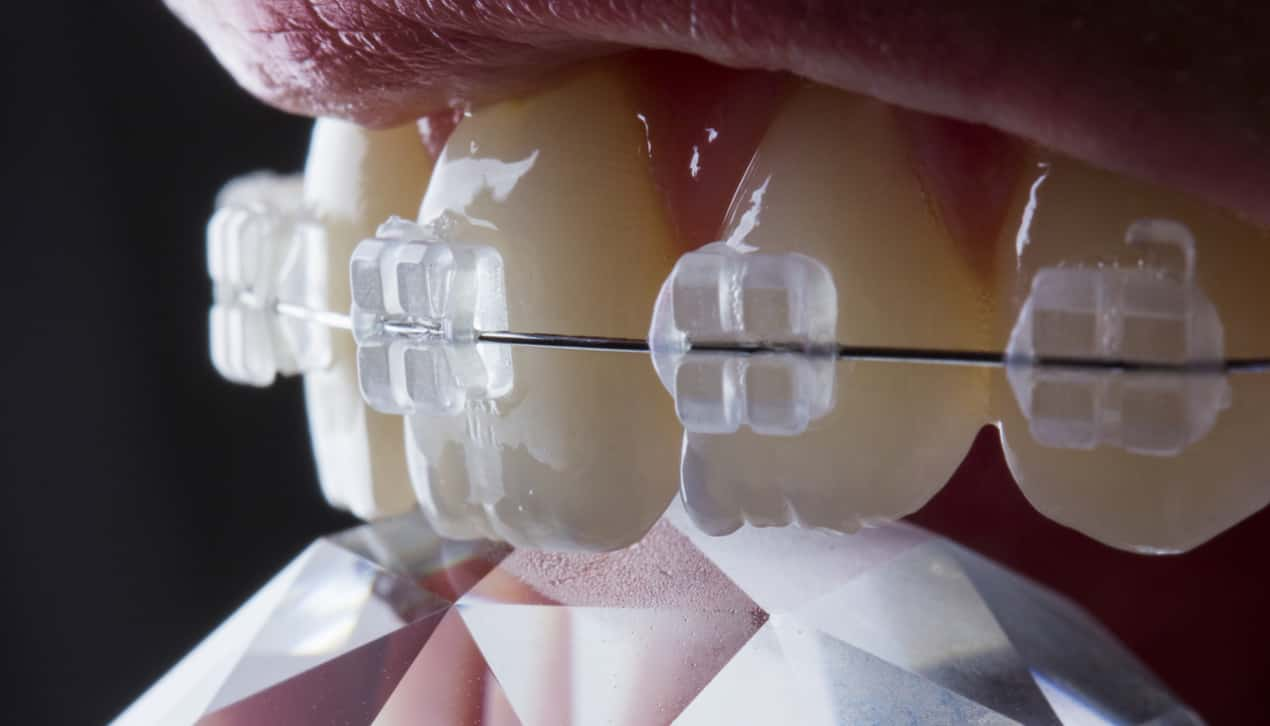
Ceramic Braces
Traditionally, an oral surgeon will use auxiliary hooks on metal or ceramic braces to stabilise the jaws after jaw surgery and to promote healing.
With clear aligners or removable braces, modifications will be made to enable the surgeon to stabilise the jaws after surgery.
The surgeon may fabricate stabilising wires called arch bars, which will be used in place of traditional braces.
Conclusion
In summary, orthognathic surgery is a predictable multidisciplinary treatment option for conditions where a bite problem is not a consequence of teeth position but jaw position.
It is understandable that most people would be afraid of surgery and may even shun this option because of fear of the unknown.
We hope that this article has helped to clarify any doubts. Do consult an orthodontist should you wish to find out more!
Article contributed by:
Dr Priscilla Lu
Associate Consultant
Department of Orthodontics
National Dental Centre Singapore
